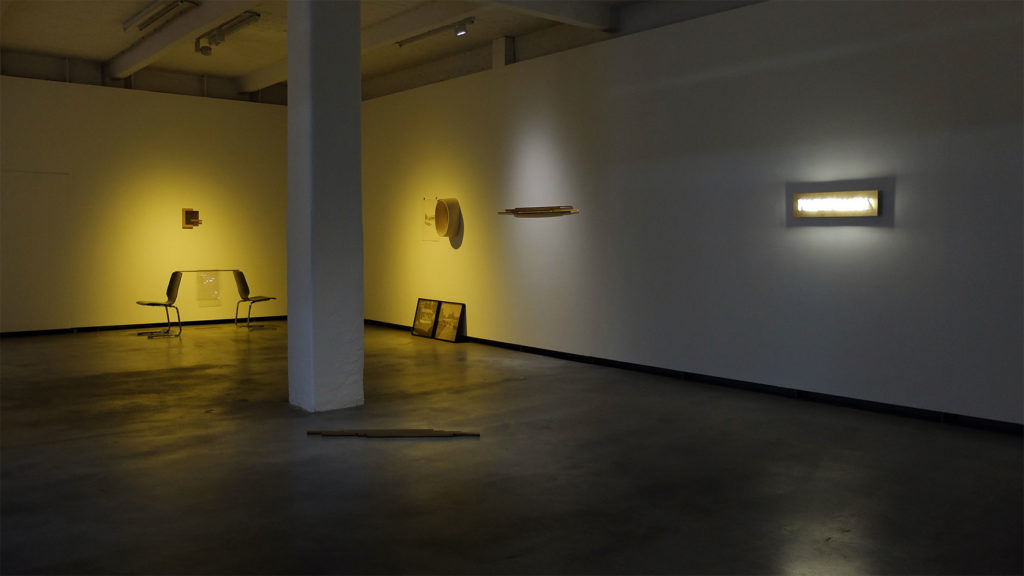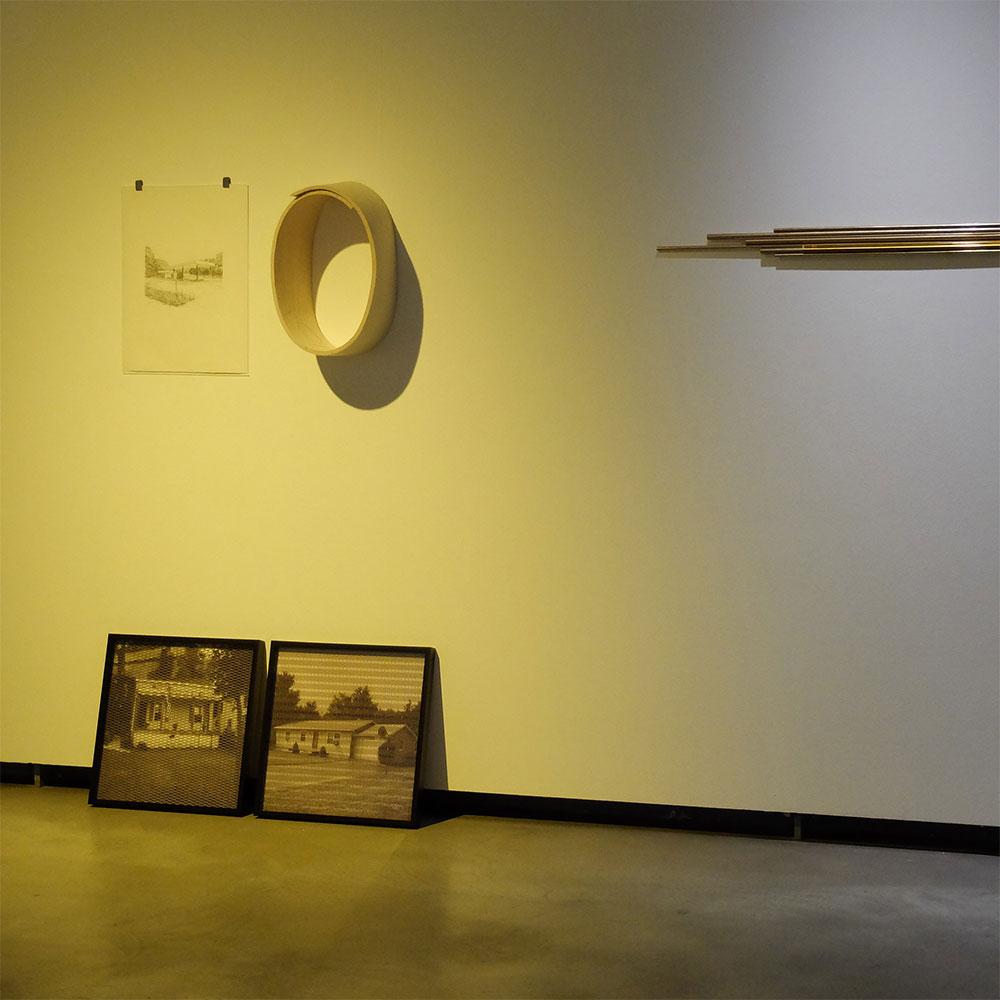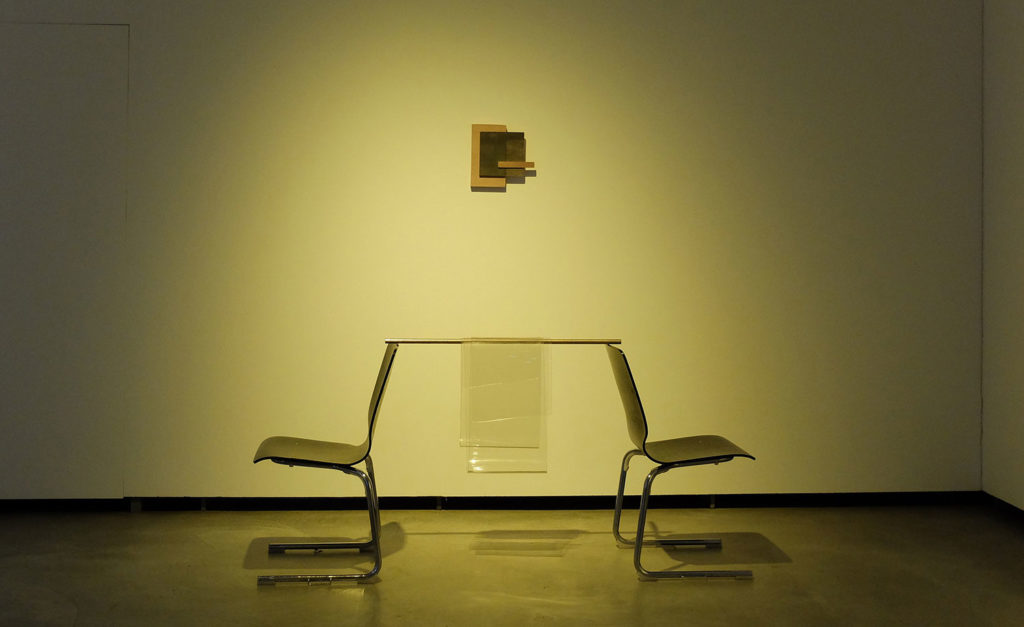In her artistic practice, Kama Sokolnicka (born in Wrocław, Poland) often relates to physical and natural phenomena. As the daughter of gardeners, she grew up observing and learning the rules and mechanisms of nature. As an artist, she transferred those observations to her works, putting them into the context of our civilization. Sokolnicka analyses humans’ psychic conditions, which are influenced and shaped by different physical changes. Through her works she refers to the endless perspective of the universe or nature and their phenomena, but only the well known, which can be seen without complicated devices.

Kama Sokolnicka, Tinnitus, Interstellar.
What is also essential in Sokolnicka’s work is its scale and the way she deals with its surroundings, whether it is marked by a museum/gallery space or an open, natural landscape. The artist does not base her art on change and transformation. What she does should be described as a form of intervention, which with the help of very limited, simple or subtle, sometimes even unnoticed, gestures, interferes with the context and the idea of the space. She achieves this by using very simple but at the same time very contradictory materials. In her works, she collates textures, shapes and structures to create a kind of artistic synergy. The artist explores the physical quality of the materials and finds mutual points for them, constructing them anew and giving them new meaning. This method is reflected in her works on paper, in which she uses very limited elements from different sources or realities and assembles them to create a new statement. Additionally, all the forms she creates relate to each other, making a conjunction of meanings.
Another important aspect of Sokolnicka’s works are their titles. They are never accidental but at the same time they do not serve as an explanation or description. They mark a field or give a clue for possible interpretations and probable ways of perceiving works. But even more importantly, the titles also show how distanced a position the artist adopts to her own practice and her very sharp sense of humor. They should not be taken too seriously or literally.

Kama Sokolnicka, Tinnitus, General View
The exhibition Tinnitus at Künstlerhaus Bethanien is a result of Kama Sokolnicka’s residency in Berlin. During this time the artist decided to develop a new project, in which she continues observations and fascinations analyzed in earlier shows. The exhibition’s title relates to a medical condition in which noises are heard although there are no external sounds. The noises themselves are not a result of imagination but they can be heard only by the person suffering from the condition. The sounds tinnitus sufferers hear appear suddenly, after unexpected events or more often without any clear cause.
In Tinnitus Kama Sokolnicka reaches for a physical phenomenon which disturbs individual perceptions of the reality we exist in. It is a condition we cannot simply get rid of but have to adjust to and accept. In a series of new works, the artist uses familiar materials she has used in the past including brass and metal. Brass, a fusion of zinc and copper, is characterized by a gold-alike color; it has antiseptic quality, does not corrode and is very resistant. Because of these features, it could be taken as a substitute for gold and relate to the attributes of gods and power. Brass itself is characterized by an interesting chemical structure: its atoms form a dendritic pattern. The artist once again brings us to the roots of nature and its unpredictable character.
Having these different aspects of brass in mind, Kama Sokolnicka uses long bars of this metal in her installations. Separately, each of them can be seen as a ray of sun, the most important star in our system. Together, the bars form a dynamic space shape, which could be fired into the universe and travel in the orbit of the galaxy. In another piece, she uses a thin plate of brass as a background for a work on paper. This recalls the golden background in orthodox icons, a reflection of an appearance of God.
As in her previous works, in this show, the artist uses contradicting materials: some are organic, such as paper, wood, and wool while others are artificial like plexiglass or transparent plastic rubber. She plays with their visual perception. This time organic materials seem to be artificial and the artificial ones behave as though they are organic. The artist pays a lot of attention to the details of each of the objects and its elaboration. Rough cuts of metal or paper contrast with a smooth surface and edges of rubber or plexi, polished surfaces of bars and plates with the unpolished structures of wool and wood. As if nature and whole universe were nothing more as a sum of constant contradictions.
At the exhibition, the constellation of works which relate closely to our reality is balanced by one neon work, a new medium for Kama Sokolnicka. In this singular work, the artist relates to intimate emotions between two people. A combination of few words appears in pulsing sequences, recalling a neon advertising a product we even do not want. But if we decide we want it and then we have it, probably very soon we will discover that it is simply not what we needed.
Words: Paulina Olszewska
About exhibition: here

Kama Sokolnicka, Tinnitus, General View.

Kama Sokolnicka, Tinnitus, Situation Is Facing Utter Atrophy.

Kama Sokolnicka, Tinnitus, Heard But Not Seen.

Kama Sokolnicka, Tinnitus, California Rocket Fuel.






